热门标签
热门文章
- 1【深度学习】纯干货之如何使用pytorch训练自己的数据(一)_pytorch训练自己的数据集
- 2wget使用
- 3kotlin 中的数据类型、泛型、枚举_kotlin data class 泛型
- 4VMware虚拟机三种网络模式----桥接模式_vmware桥接模式
- 5RuntimeError: CUDA error: out of memory解决记录_解决训练过程中内存溢出 runtimeerror:out of memory
- 6.Net/.Net Core 的界面框架 NanUI 发布新版本啦!_nanui 框架白屏
- 7qq互联用PHP SDK获取了token和openid 调用api的get_user_info方法出错解决办法_error: -1 msg : client request's parameters are in
- 8WPF Command
- 9mac 访问局域网服务器地址_mac 访问//172.16.8.12
- 10【ChatGPT】使用大型语言模型 (LLM) 进行特定领域语言(DSL)生成_如何让llm生成自己的dsl代码
当前位置: article > 正文
GoLang之切片底层系列一(切片初始化)_golang 切片初始化
作者:盐析白兔 | 2024-03-07 15:47:31
赞
踩
golang 切片初始化
GoLang之切片底层系列一(切片初始化)
注:本文以Windos系统上Go SDK 1.18进行讲解
1.var创建不初始值
func main() {
var a []int
if a == nil {
fmt.Println("yes")//输出:yes
} else {
fmt.Println("no")
}
fmt.Println(len(a), cap(a)) //0 0
}
- 1
- 2
- 3
- 4
- 5
- 6
- 7
- 8
- 9
- 10
- 11
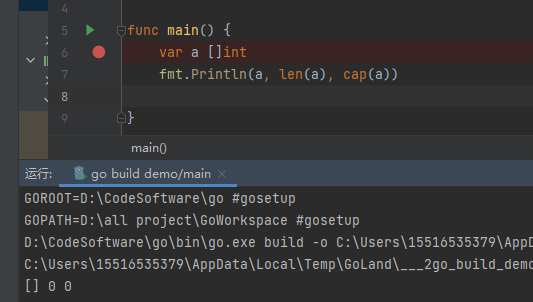
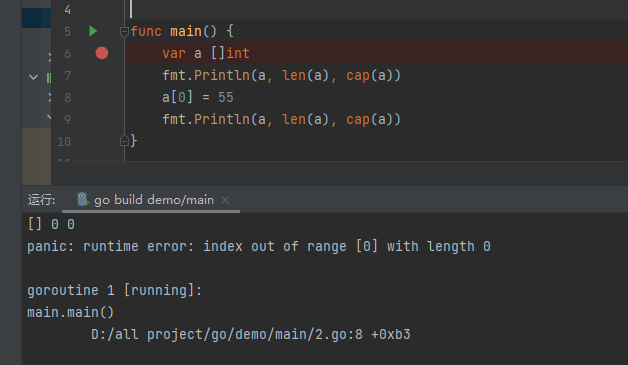

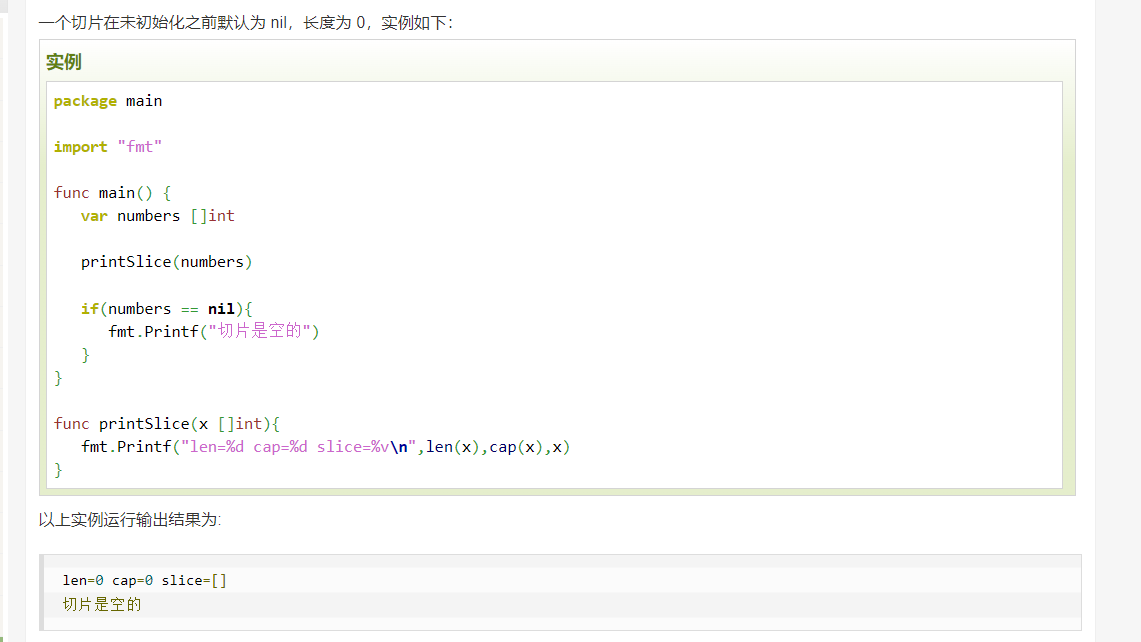
2.var创建不初始值再集体赋值
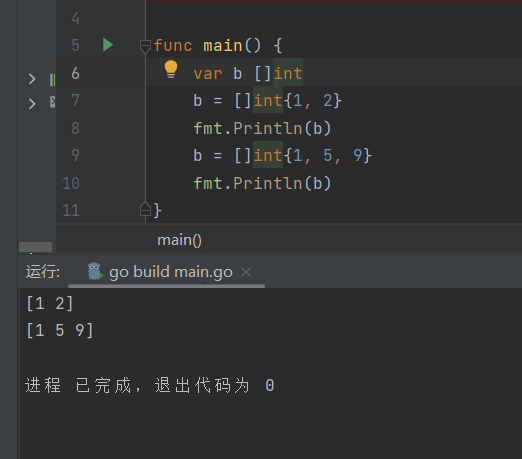
3.var创建初始化值
func main() {
var a = []int{1, 2}
fmt.Println(a, len(a), cap(a)) //[1,2] 2 2
}
- 1
- 2
- 3
- 4
- 5

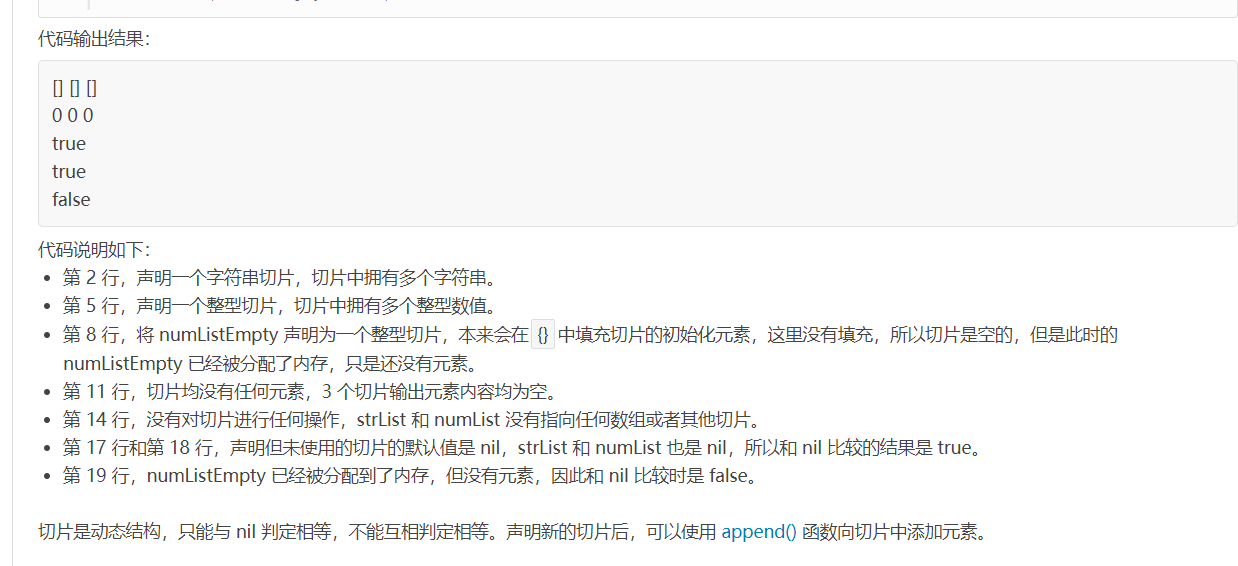
4.var创建初始化值不能再超出容量追加值
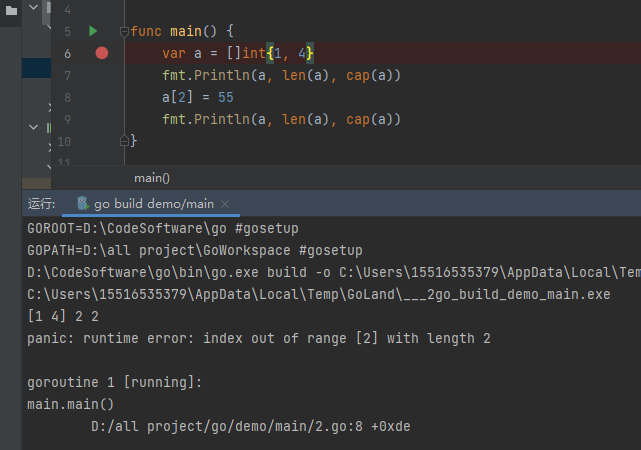
5.var创建初始化值再集体赋值
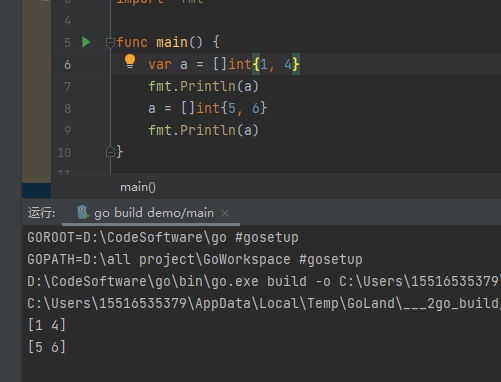
6.make创建规则
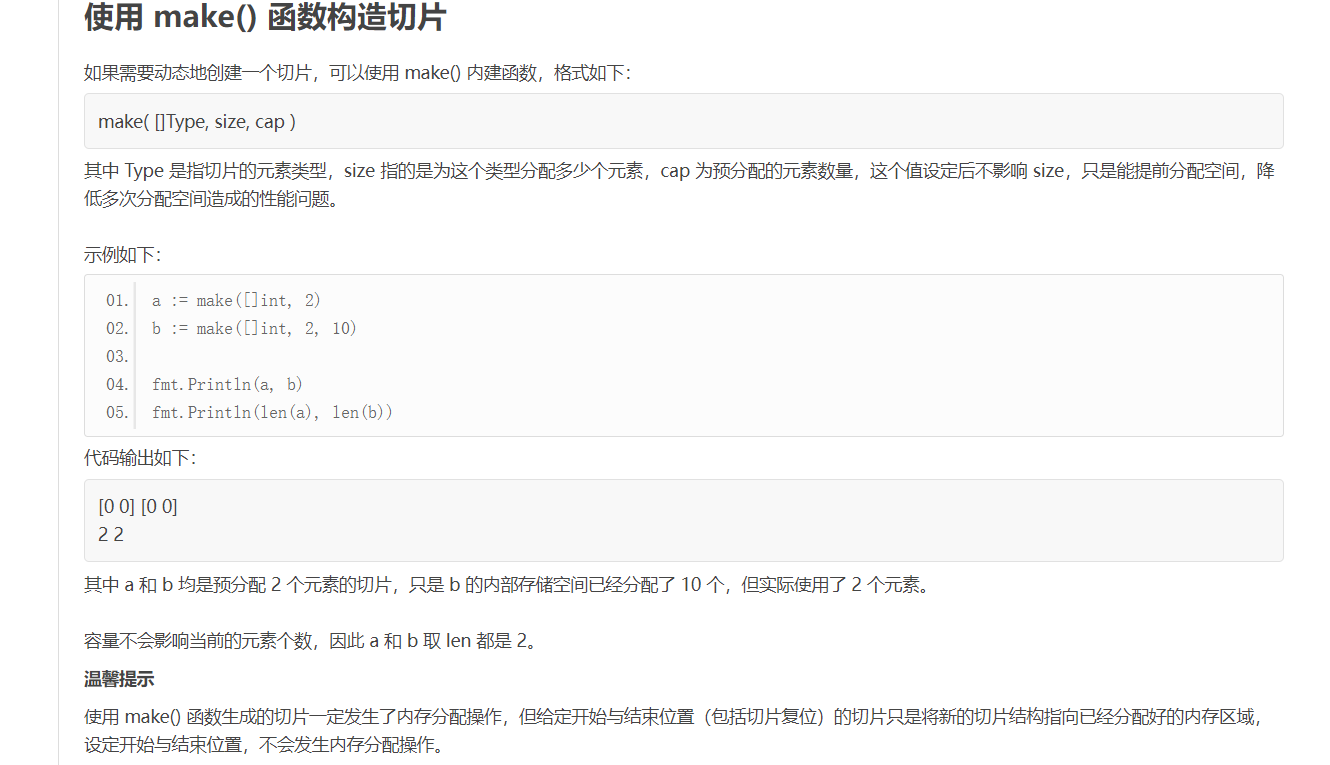
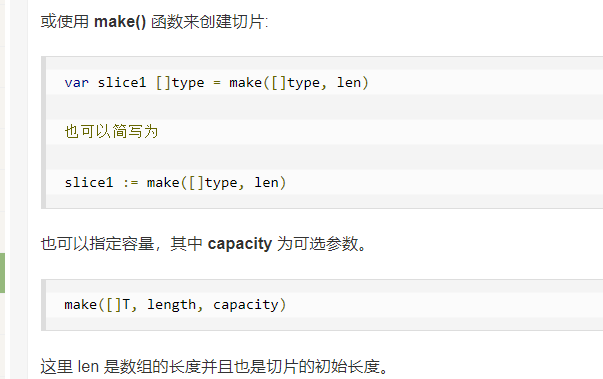

7.make指定len创建
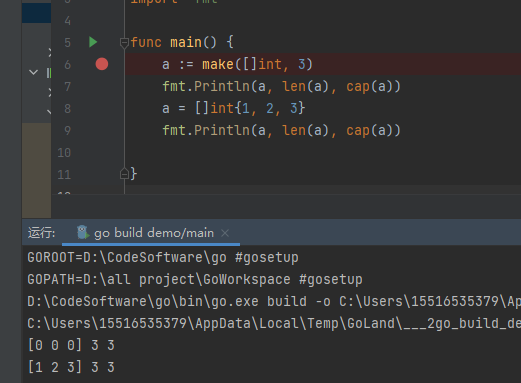
8.make指定len创建再集体赋值
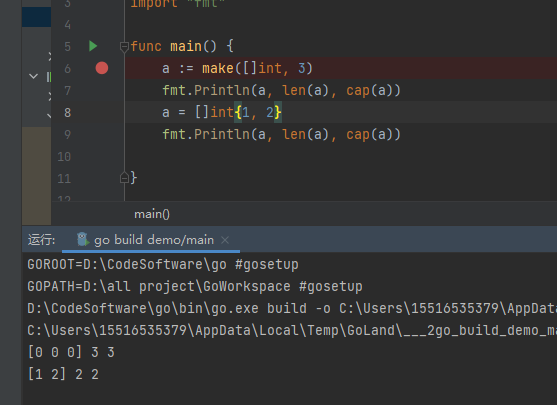
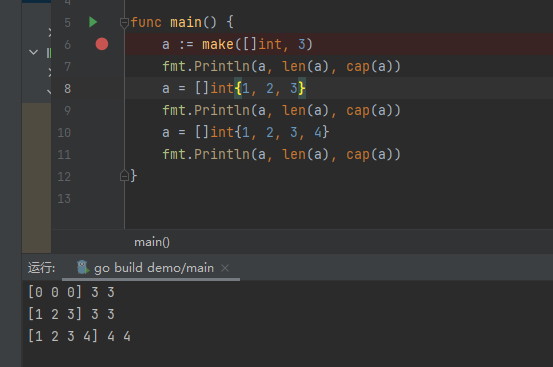
9.make指定len创建再集体赋值不能再超出容量追加值
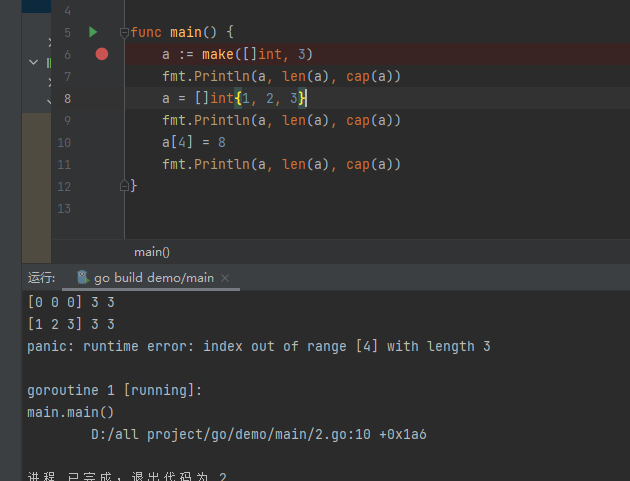
10.make指定len创建再集体赋值能再不超出容量追加值

11.make指定len与cap创建再集体赋值不能再超出容量追加值

12.创建不初始化值再集体赋值
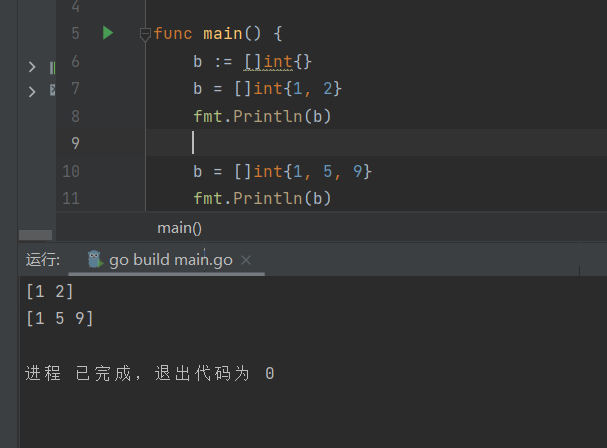
13.创建不初始化值不能再超出容量追加值
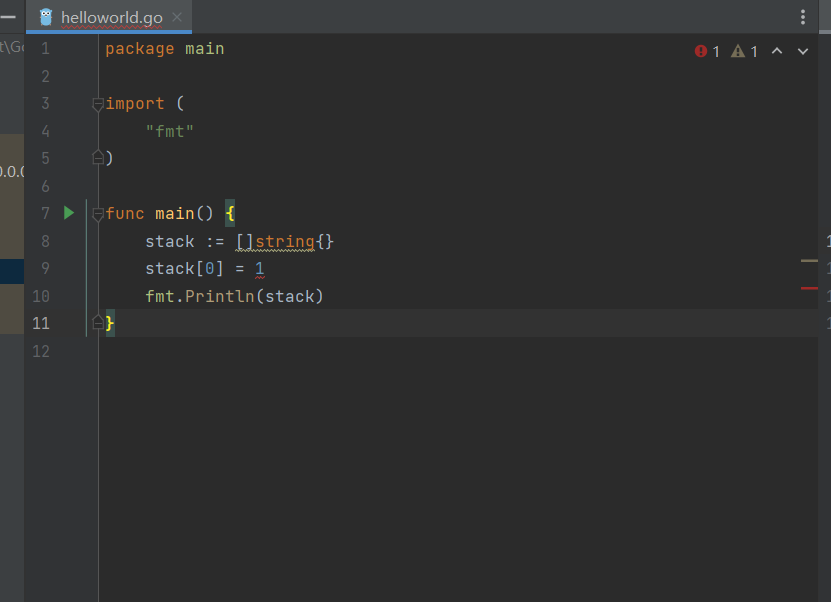
14.集体复制必须加[]
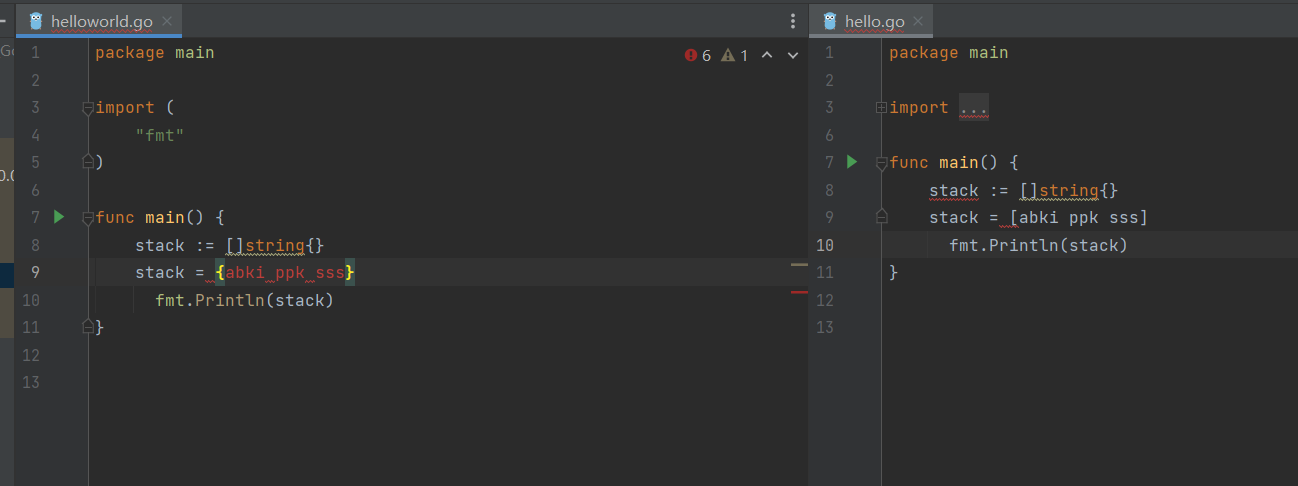
15.字符串slice直接输出没有引号
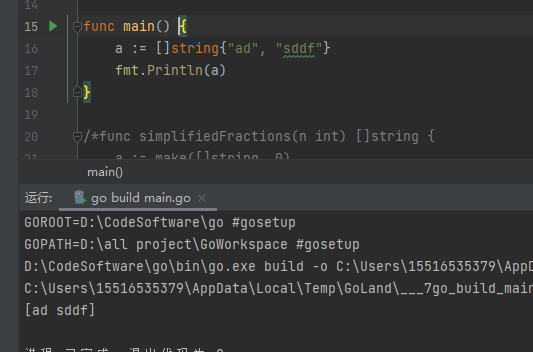
16.slice切割
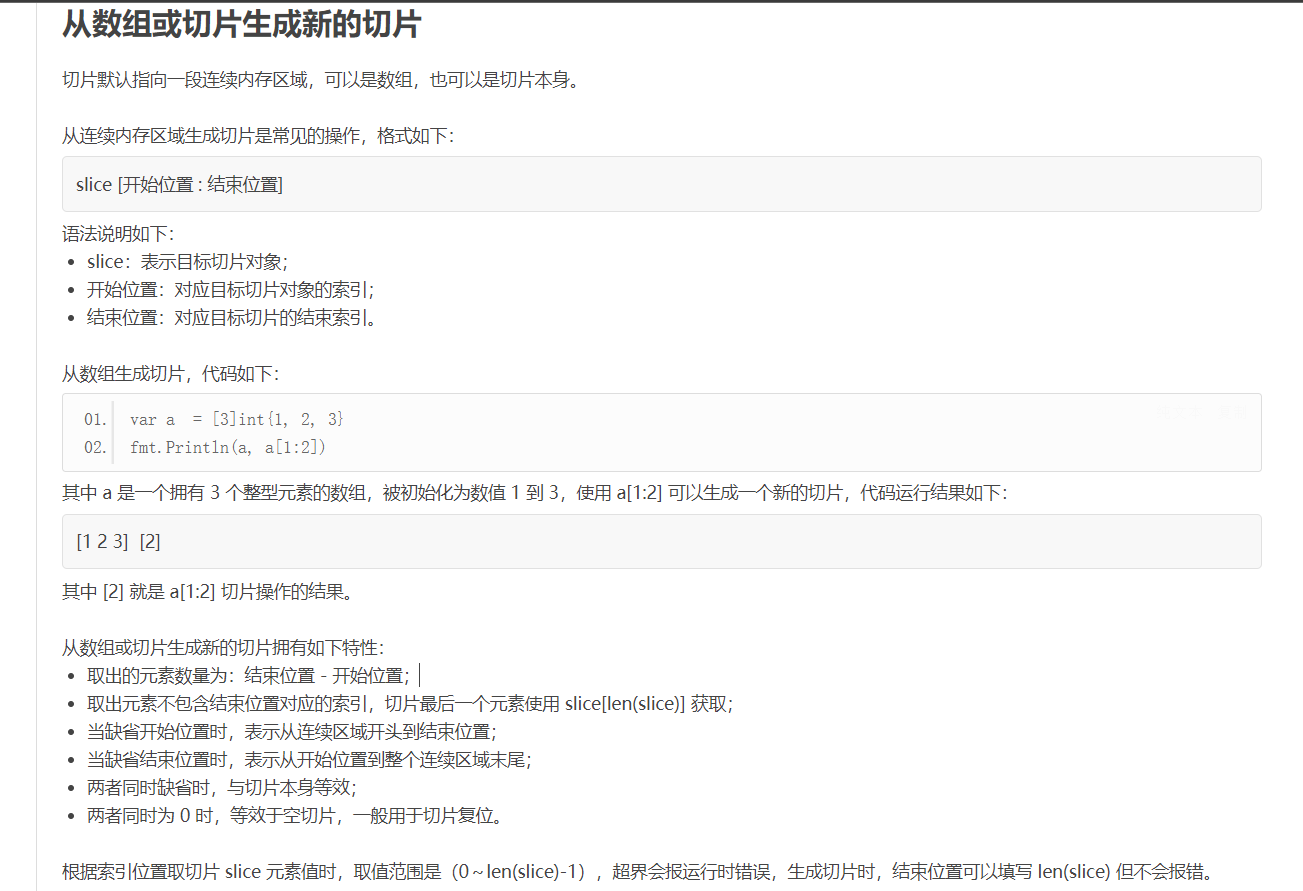
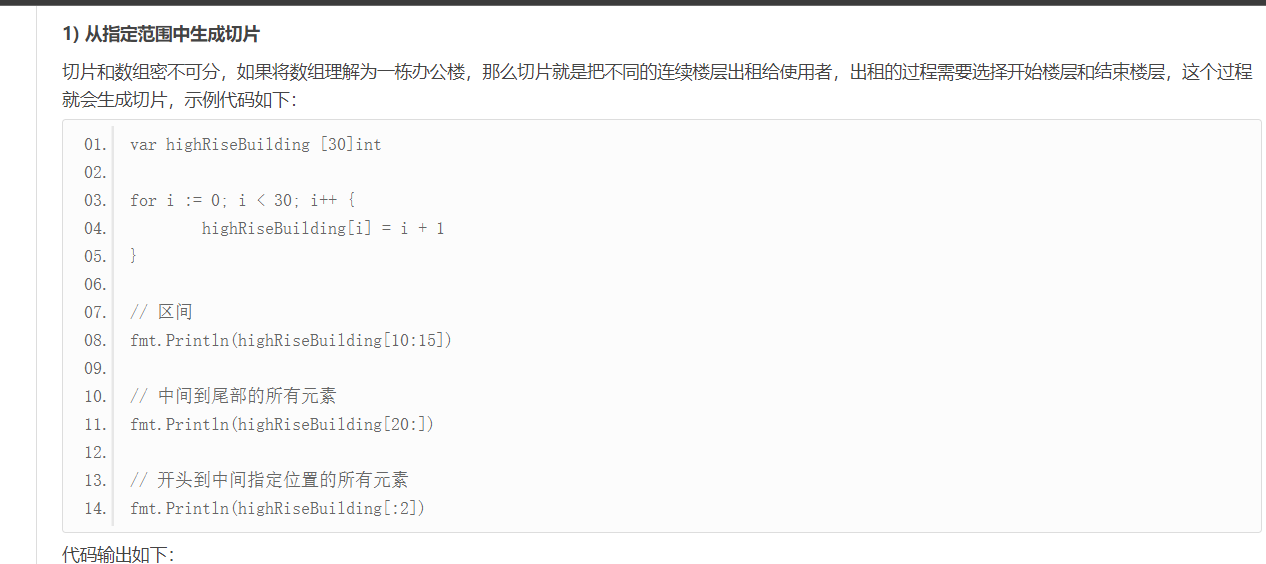
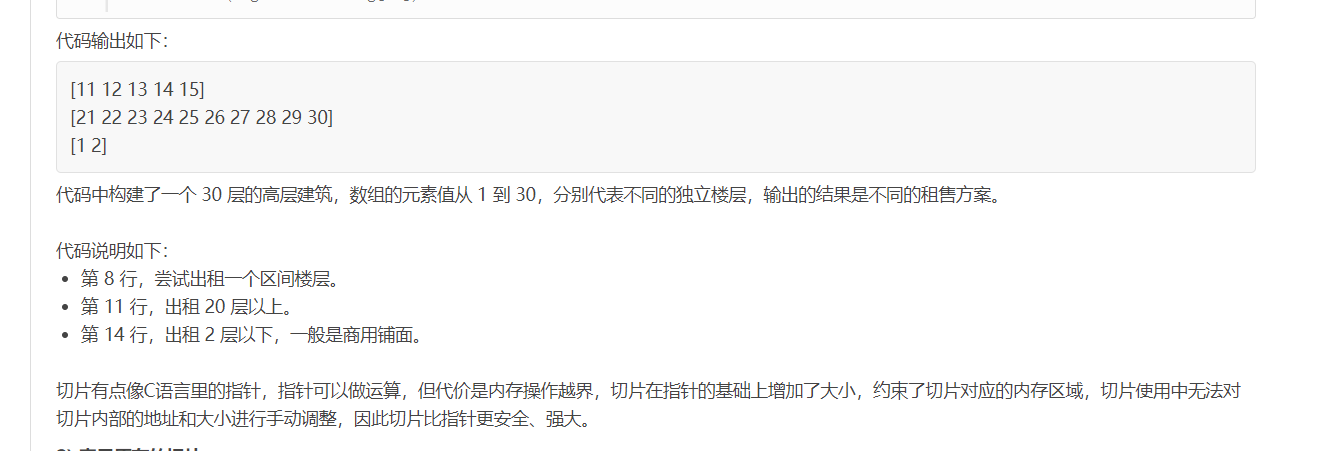
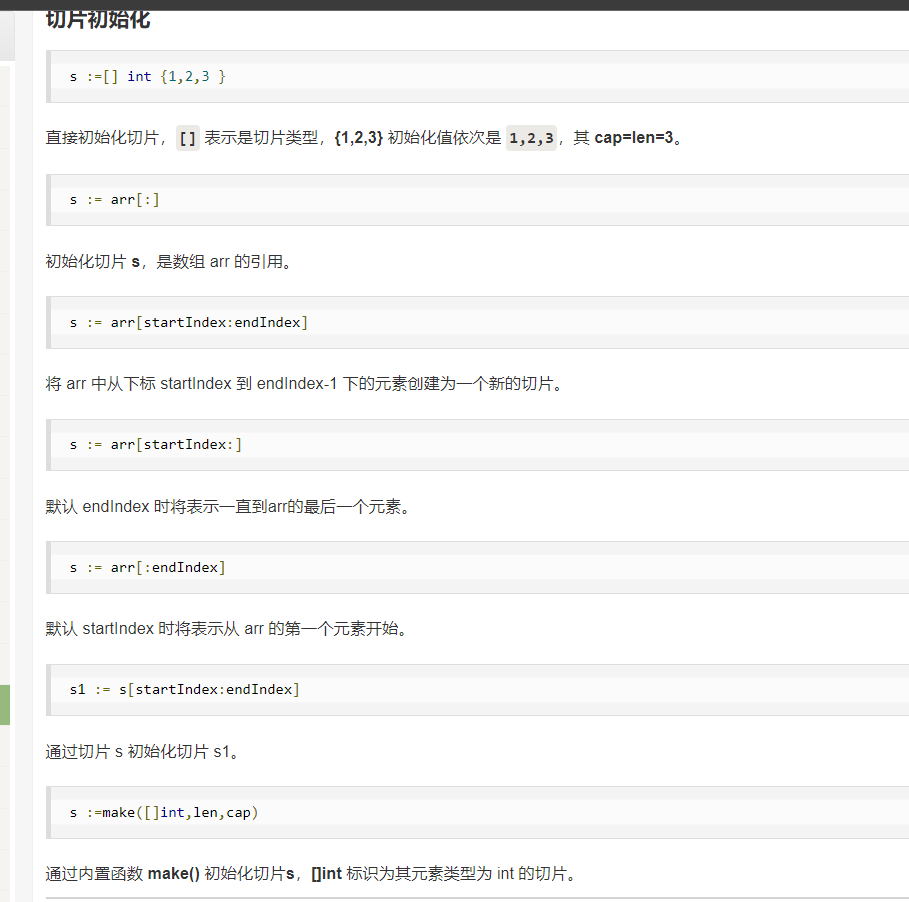
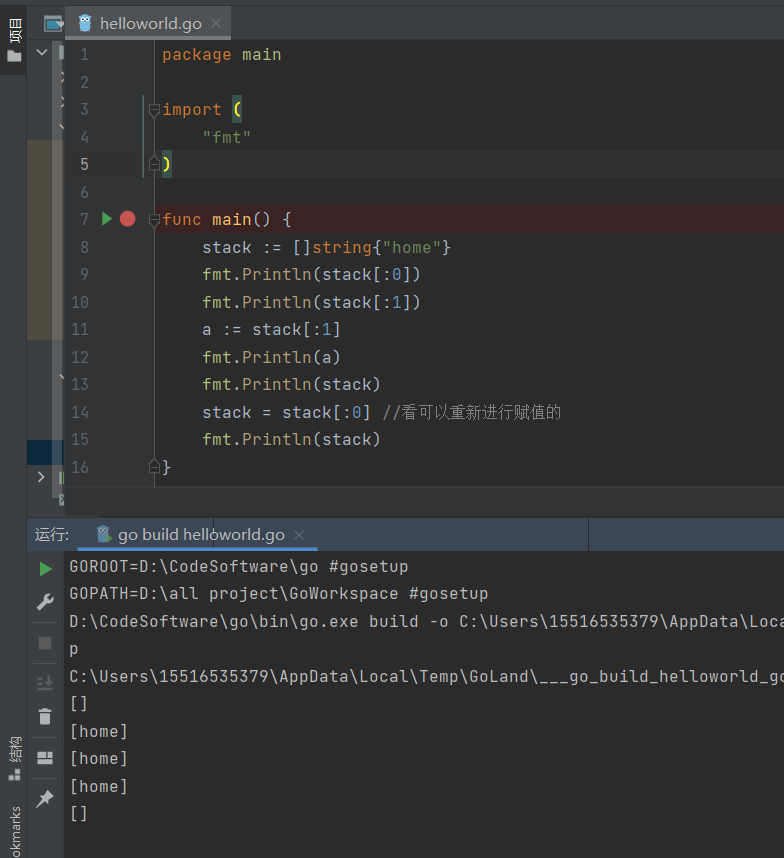


以下说明切片并不改变原来的元素
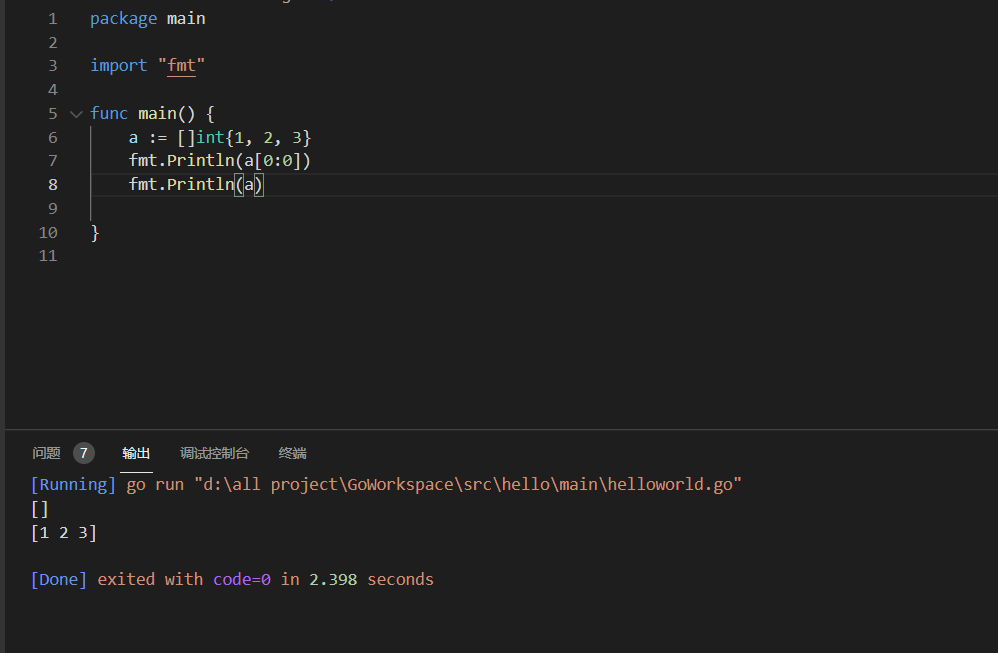
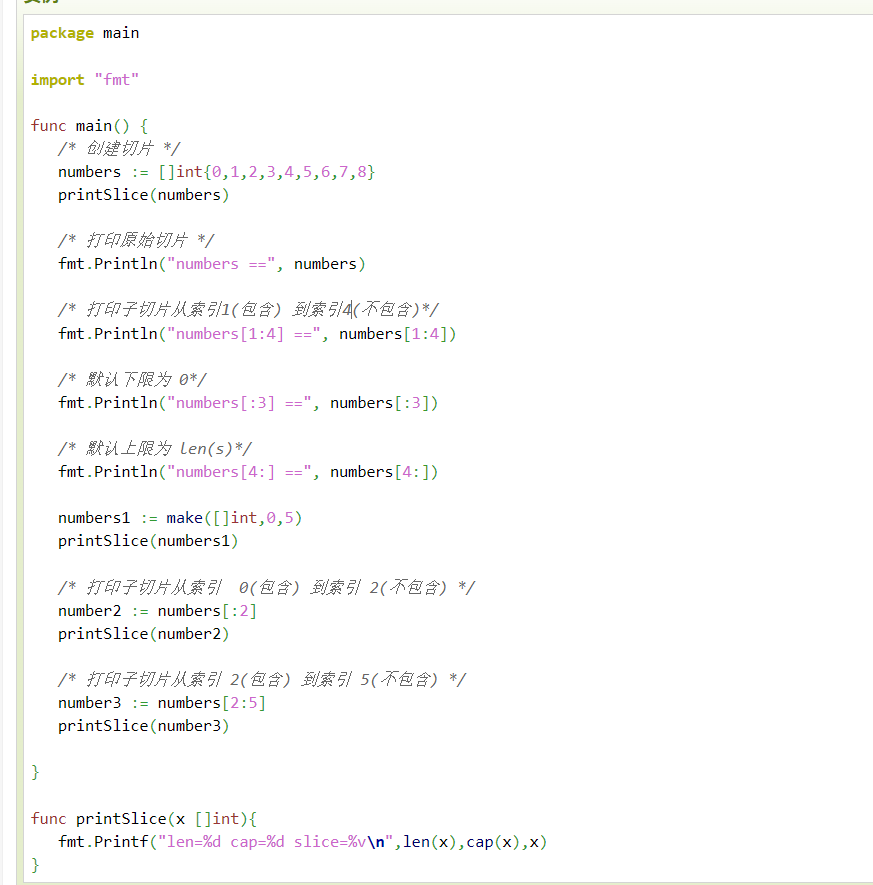
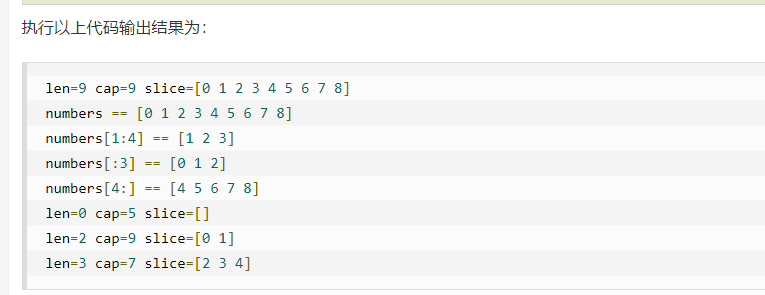
对于数组,指向数组的指针,或切片a(注意不能是字符串)支持完整切片表达式:
a[low : high : max]
上面的代码会构造与简单切片表达式a[low: high]相同类型、相同长度和元素的切片。另外,它会将得到的结果切片的容量设置为max-low。
完整切片表达式需要满足的条件是0 <= low <= high <= max <= cap(a),其他条件和简单切片表达式相同
注意:在完整切片表达式中只有第一个索引值(low)可以省略;它默认为0。
func main() {
a := [5]int{1, 2, 3, 4, 5}
s := a[1:3] // s := a[low:high]
fmt.Printf("s:%v len(s):%v cap(s):%v\n", s, len(s), cap(s))
}
/*
s:[2 3] len(s):2 cap(s):4
*/
- 1
- 2
- 3
- 4
- 5
- 6
- 7
- 8
func main() {
a := [5]int{1, 2, 3, 4, 5}
t1 := a[1:3:3]
fmt.Printf("t:%v len(t):%v cap(t):%v\n", t1, len(t1), cap(t1)) //t:[2 3] len(t):2 cap(t):2
t2 := a[1:3:4]
fmt.Printf("t:%v len(t):%v cap(t):%v\n", t2, len(t2), cap(t2)) //t:[2 3] len(t):2 cap(t):3
t3 := a[1:3:5]
fmt.Printf("t:%v len(t):%v cap(t):%v\n", t3, len(t3), cap(t3)) //t:[2 3] len(t):2 cap(t):4
}
- 1
- 2
- 3
- 4
- 5
- 6
- 7
- 8
- 9
func main() {
a := [5]int{1, 2, 3, 4, 5}
t1 := a[:3:3]
fmt.Printf("t:%v len(t):%v cap(t):%v\n", t1, len(t1), cap(t1)) //t:[1 2 3] len(t):3 cap(t):3
t2 := a[:3:4]
fmt.Printf("t:%v len(t):%v cap(t):%v\n", t2, len(t2), cap(t2)) //t:[1 2 3] len(t):3 cap(t):4
t3 := a[:3:5]
fmt.Printf("t:%v len(t):%v cap(t):%v\n", t3, len(t3), cap(t3)) //t:[1 2 3] len(t):3 cap(t):5
}
- 1
- 2
- 3
- 4
- 5
- 6
- 7
- 8
- 9
声明:本文内容由网友自发贡献,不代表【wpsshop博客】立场,版权归原作者所有,本站不承担相应法律责任。如您发现有侵权的内容,请联系我们。转载请注明出处:https://www.wpsshop.cn/w/盐析白兔/article/detail/206363
推荐阅读
相关标签


